Historic Week for Rail in America
Data spotlights represent data and statistics from a specific period of time, and do not reflect ongoing data collection. As individual spotlights are static stories, they are not subject to the Bureau of Transportation Statistics (BTS) web standards and may not be updated after their publication date. Please contact BTS to request updated information.
One-two-punch a powerful reminder of rail’s importance to U.S.
May 1, 2021 marked 50 years since the first Amtrak passenger rail trip and since the Golden Spike of North America’s first transcontinental railroad completed the rail network from Omaha to Sacramento. The one-two punch of these auspicious anniversaries reminds us of the significant role played by rail in the development of the United States.
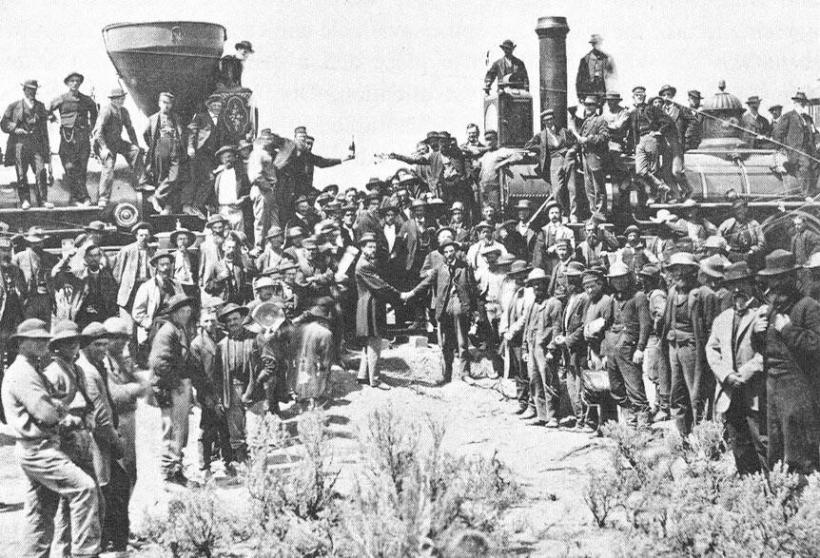
Photo: Driving of the “Last Spike, Promontory Summit, Utah, May 10, 1869. Photographer: A.J. Russell
Transcontinental rail supports settlement, economic development of American West.
The last spike ceremony of May 10, 1869, established a nearly 2,000-mile segment that spurred further rail development connecting the East and West coasts as well as many cities north and south. The new national network provided a safer, faster, and less expensive way to move freight. It also opened the West to millions of Americans, making California accessible to New York in as few as 90 hours, compared to 4 months by ship and about 6 months by wagon train.
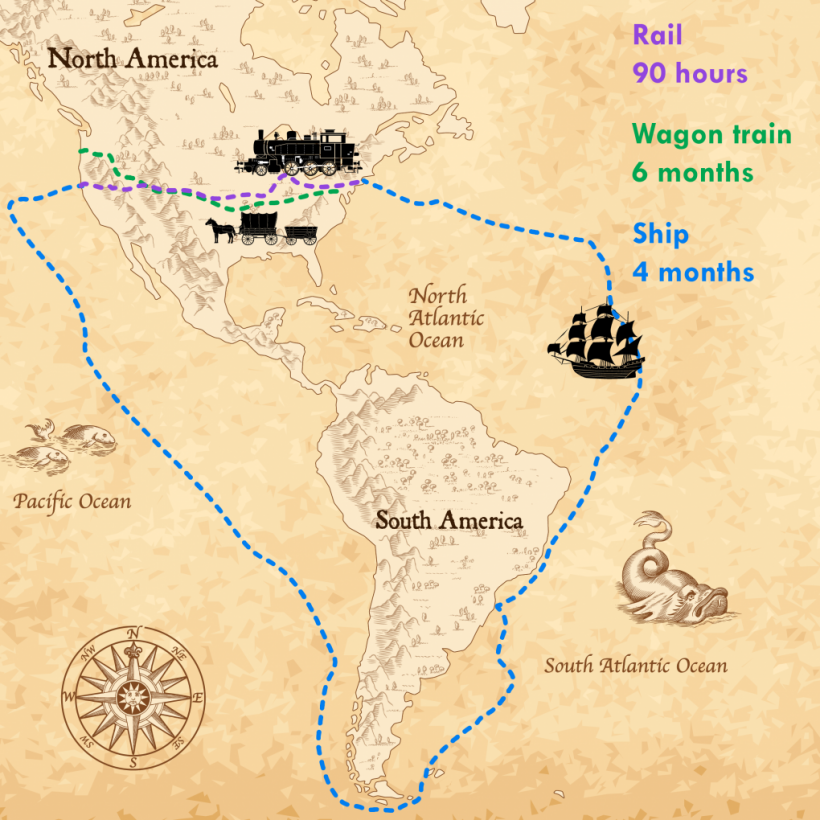
U.S. freight rail delivers the goods.
In 2018, America’s rail network carried 1.78 billion tons of freight valued at $741 billion. The long-distance rail shipping first made possible by the transcontinental railroad remains a key economic contributor. As the charts below demonstrate, the percentage of 2018 U.S. freight tonnage and value carried by rail (shown in green) increased as the shipping distance increased, up to 2,000 miles.
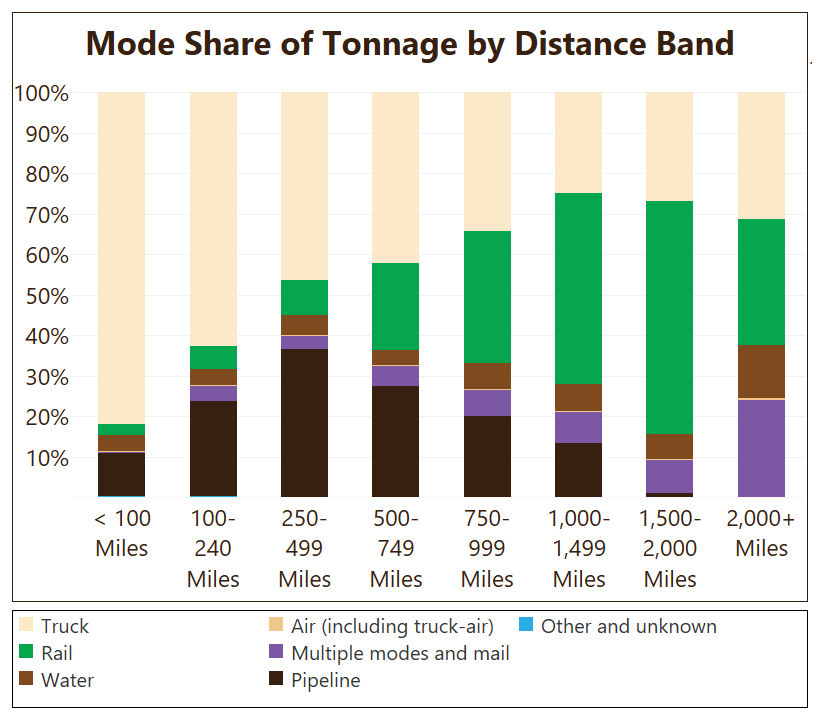
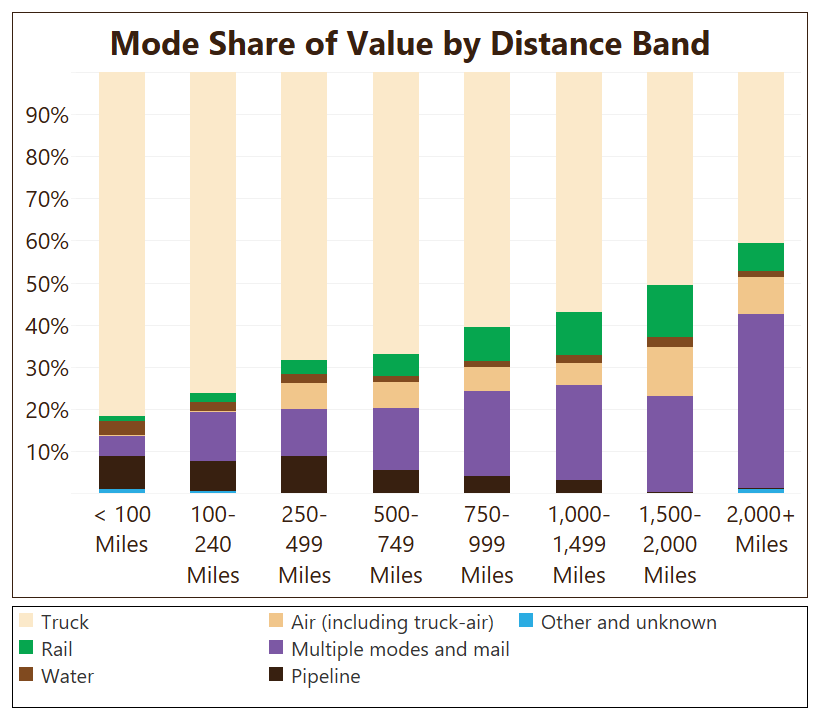
Source: BTS Freight Facts and Figures, based on the Freight Analysis Framework
19th Century transcontinental rail lays groundwork for 21st Century cross-country Amtrak routes.
On the passenger side, in its most recent non-COVID-19 year, FY 2019, Amtrak carried more than 32 million passengers. And, some of the routes in the chart below were first made possible by the transcontinental rail line established a century and a half ago.
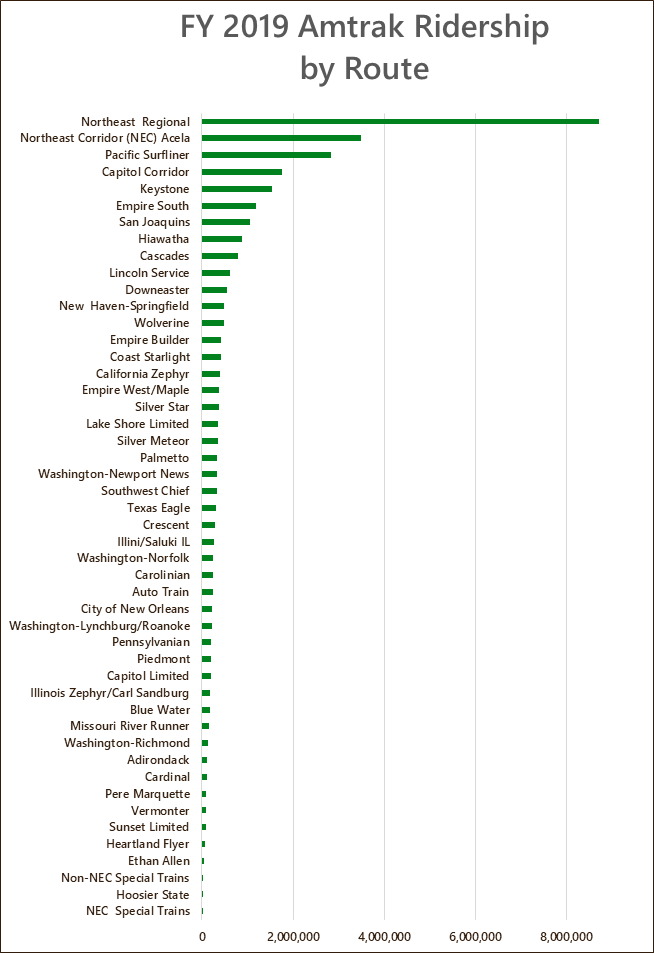
Source: BTS analysis of Amtrak data
